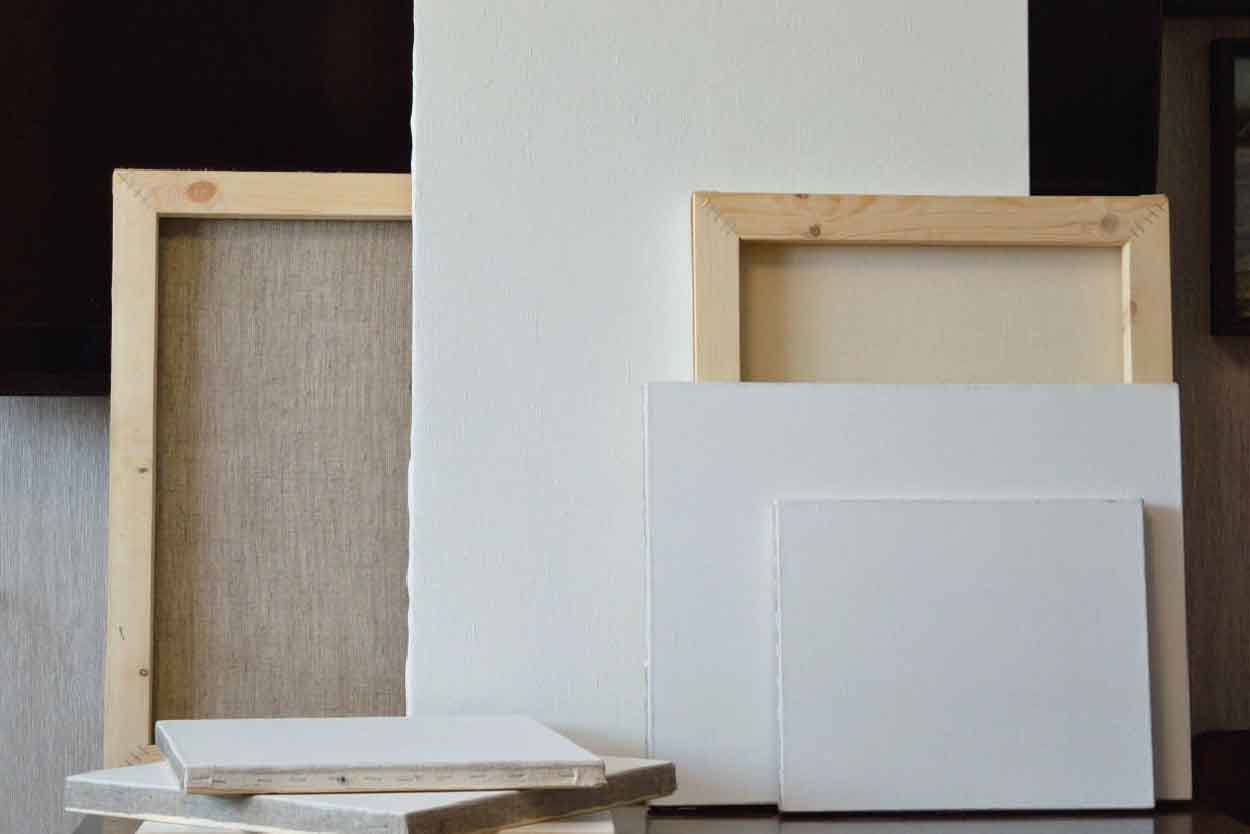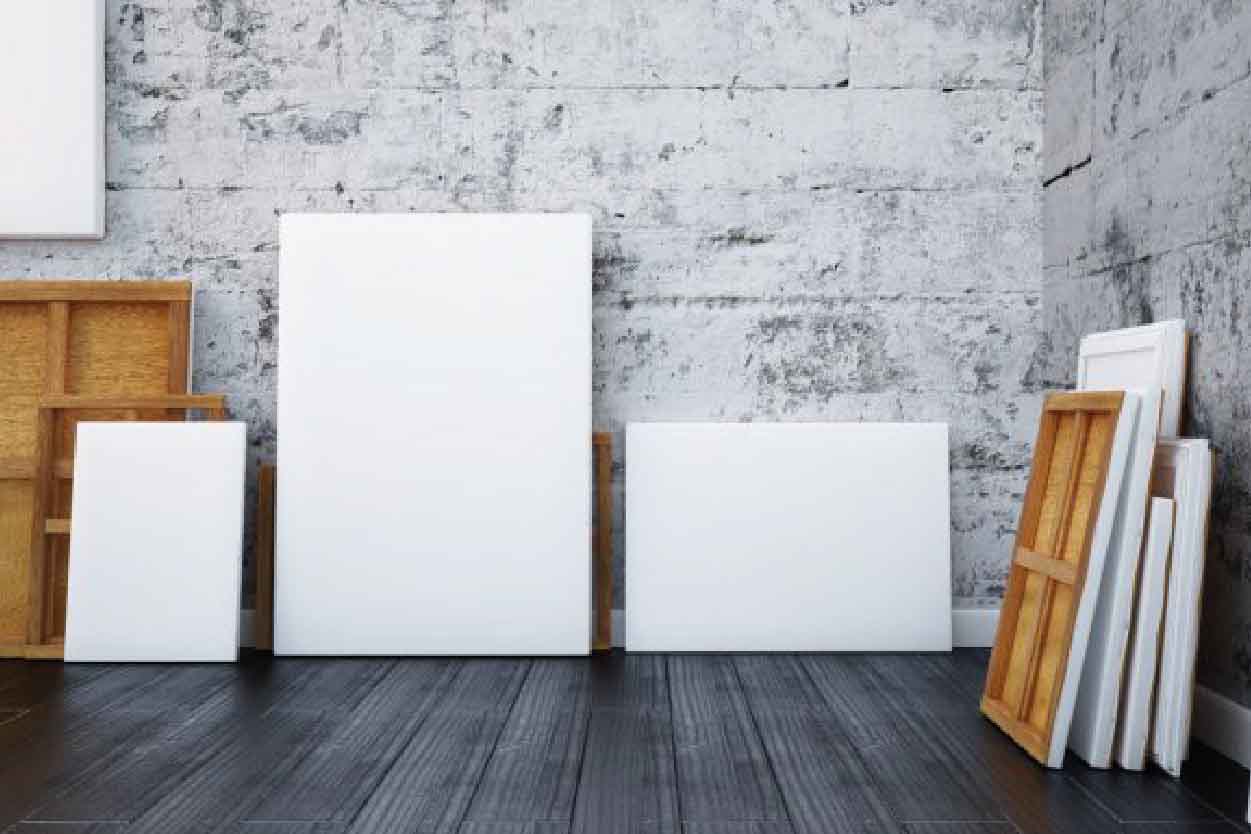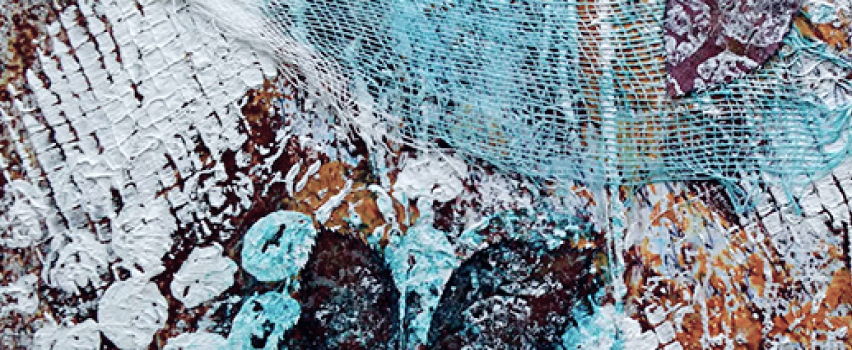
In addition to the question of choosing paints, a novice artist faces another very important task - the choice of canvas. After all, a properly selected canvas for oil painting plays an important role in the successful result of the work. What should be guided in an artist`s choice? In this article we will try to answer all the key questions that arise choosing a canvas for oil painting.
First of all, let's consider what canvases for painting are and what are their differences.
Types of canvas for painting

Modern specialized art shops offer a variety of canvases for different types of painting. Each of their options has its own special characteristics and properties, taking into account which the artist can choose the most suitable one. That is why, you should not choose a canvas at random, without having any idea about the materials and features of each of the canvases offered to you. Indeed, as a result, it can significantly overshadow the further process of painting with oil, in addition, you will waste time and money.
In this regard, below are provided key characteristics for various types of canvases, which will help you not to get confused among their variety and make the right choice.
Linen canvas
Linen yarns are extremely durable and reliable, making them ideal for oil painting. It is resistant to changes in temperature and humidity, and also has a high coefficient of abrasion. Painted on linen canvas, oil paintings are durable and less prone to deformation. However, it is worth paying attention to the fact that linen canvas can also be of different quality. If the fabric is made of long fibers, it is of high quality. If the material was made from the waste of the primary processing of flax, this will be evidenced by irregularities, bumps and thickenings, which must be cut off with a blade before starting to paint.
Also, pay attention to the graininess of the canvas. There are three main types:
- small;
- medium;
- large.
For detailed drawing, it is better to use a fine-grained canvas. The so-called "universal" medium grain canvases are best suited for beginners and can be used for various oil painting techniques. Large-grained canvases are the best option for pasty painting, where the strokes are quite large and weighty. It is such a canvas that is able to withstand the weight of the paint and not give in to deformation.
In conclusion, it should be said that linen canvas is rightfully popular and has a good reputation among artists. However, the high quality also affects the price. The cost of linen canvas is quite high, so it is best to choose such a canvas when you have experience and skills in oil painting.
Cotton canvas
This is one of the popular and widespread options. Such a canvas is chosen for several reasons:
- smooth texture due to fine thread;
- low cost;
- versatility (suitable for painting with different materials in different techniques).
However, there is a number of disadvantages, which, in fact, is evidenced by the difference in cost in relation to linen canvas. These include:
- high susceptibility to deformation;
- exposed to moisture, may rot;
- not resistant to mechanical damage.
This option is perfect for beginners, it will be easy to use regardless of the chosen technique and style and will not require significant financial costs.
Burlap (base)
Not everyone knows, but burlap is also used as a canvas for oil painting. It is suitable for embossed pasty painting with a pronounced texture. The main thing to remember when working with burlap is that it requires a good primer and gentle handling. After all, its yarn is quite fragile. Also, do not choose too thin yarn, otherwise you risk spending a lot of time and effort without result.
This is one of the least expensive options, but not suitable for all painting techniques with oil paints.
Synthetics
Synthetic canvases have appeared on the art market quite recently and have not yet passed the test of time. However, even without much experience with synthetic fiber, you can come to the conclusion that:
- it does not rot;
- very light;
- completely smooth due to the lack of texture.
Also, thanks to polyester, these canvases should be distinguished by high strength and resistance to various external influences. Due to the recent appearance of synthetic canvases, it is difficult to say with certainty how well they are applicable in oil painting. Here, rather, it is worth trying and making a decision based on experience.
Paper or cardboard
These materials can be attributed to a number of the most affordable, but also the most short-lived. Primed cardboard will go well for canvas and is often used by artists. Paper, on the other hand, absorbs too much moisture from the paint and is not suitable for oil painting.
Combined canvas
It is a combination of threads from different materials. For example, cotton-linen or cotton-synthetic. Personally, I do not use this kind of canvases as I find them unpredictable. After all, each material has its own characteristics and features, and in combination it is difficult to predict how strong, durable and resistant to mechanical damage it will be as a result.
How to choose a canvas for oil?

Having familiarized yourself with the varieties of art canvases, it's time to find out which ones are suitable for oil painting. First of all, it should be noted that it is not entirely possible to single out one separate type of canvas as the most suitable for oil painting. After all, a lot depends on the task that the artist sets himself. We can definitely say that linen and cotton canvases are definitely suitable for oil. The rest – depending on the painting technique. Well, synthetic canvases in general are currently going through the testing stage, and therefore there is still not enough information necessary for the selection.
Based on the above, the question may arise: "Does the choice of canvas determine the technique and method of painting a picture?" To a certain extent, yes. But here, rather, the opposite is true. When choosing a canvas, it is advisable to understand what and using which technique you are going to paint with oil. After all, large pasty strokes look great on burlap, detailed drawing loves a smooth, fine-grained surface, large canvases require strong material so that they do not sag in the future.
A novice artist should opt for cotton canvas, as well as burlap or cardboard canvases. If you have already gotten a feel for oil paints, and you know how they behave in different techniques, you can try synthetic canvas. Well, when you already clearly intend to create a durable masterpiece, then you should play it safe and purchase a reliable and proven linen canvas.
Canvas on stretcher or cardboard?
This is one of the important questions a beginner may have. What is the main difference and will it affect your work? In fact, canvas on cardboard is the same as canvas on a stretcher. It's just that the material is glued onto a solid cardboard base, making it cheaper. Moreover, such a canvas will no longer sag and will not require a constriction. In the future, each artist independently determines which option suits him best.
Which canvas to choose: primed or not?
Often all canvases presented in specialized stores are already primed and ready to work with oil paints. However, if it seems to you that there is not enough primer, or that there are gaps somewhere, you can prime it again yourself. You can use a special art primer, which you can buy in the same art store as the canvas. A primer is also needed if you are making the canvas yourself. It should be noted that both a special primer for oil and a universal one are suitable for oil painting.
Conclusions
Having familiarized yourself with all the variety of canvases in painting, it's time to recap.
- Before choosing a canvas, it is advisable to have an idea for a future painting and an idea of the techniques that will be used.
- It makes sense to start with oil paints using less expensive canvases.
- The main difference between stretched canvas and cardboard is that there is no stretcher. It doesn't make cardboard canvas better or worse, but it makes it more budgetary.
- Before you start painting with oil paints, make sure your canvas is primed.
- Over time, each artist himself determines which version of the canvas is the most optimal.
I hope this article helped you understand the variety of canvases and their main features. If you still have questions on this topic, leave your comments or write to alla@struchaieva.art and I will try to answer them. Also, below is a short video about the types of canvas:

The earliest work of Leonardo da Vinci
A small painted tile caused quite a stir among the scientists of the art world. This is because some scholars believe that the recently discovered work is Leonardo da Vinci's earliest known work

Interesting facts about painting
Paintings hold the secrets of the creator. Sometimes we manage to solve them, but many of them continue to be riddles, or simply stay unnoticed.












Thank you, your review has been sent successfully.
It will be posted on the site after moderation.